The following post is adapted from a short talk I gave to first year fine art students at Loughborough University about using sketchbooks.
I use sketchbooks on a daily basis to help me make my paintings and maps. They’re a place to plan, play and practice. Work in my sketchbooks is always in beta format and is unlikely to be a finished piece of artwork. Sketchbooks are most definitely working documents.
A sketchbook is a place to keep notes.
My map making relies heavily on research. I tend to write notes by hand because I retain the information much better. I can also see the shape the words make which is really important for notating my maps.
I also use sketchbooks as a place for work/life notes – shopping lists and to do lists. They’re mundane but absolutely necessary for me to organise myself so I can continue my practice.
A sketchbook is a place to plan and make preparations.
I use it to sketch out ideas and play with composition and format. It’s absolutely vital that I allow myself a place to safely make mistakes. Nothing looks perfect. I don’t want to spend too much time ‘finishing’ something – the vitality of the image should go into the final pieces and not be sucked up by the sketchbook.
A sketchbook is a place to play and practise.
I use it to practise my observational skills. I belong to a group who go drawing once a week in pubs. The venue changes every week and is announced on the day via Facebook. It’s open, drop-in and free. I find it a refreshing antidote to life-drawing which has always been part of my practice.
But I mostly enjoy the jeopardy of drawing the punters. Often they are fairly animated or they might get up and move around or leave. (My sketchbooks are full of half finished drawings.)
They might be pissed off if they realise I’m drawing them…
Or they might be fascinated…
I regularly use biro. Committing to a line becomes much edgier because I can’t erase mistakes. I have to embrace them as part of the drawing, go with it, draw round it and carry on. There’s no photoshopping or whitewashing. No aesthetic propaganda. No safety belt. It doesn’t matter if it’s not perfect.
I have practised the ability to shamelessly draw without self consciousness in public spaces with lots of activity going on around me.
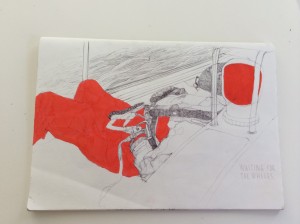
Sketch of crew member on a residency sailing across the N Atlantic (the wave motion didn’t make it easy…)
Summing up:
I use sketchbooks to keep notes, make plans and preparations and to play and practise in.
It’s really important to have a place where I can work freely, without fear of judgement, make mistakes and not care about perfection or correction. When sketchbooks are consciously curated or edited for presentation to other people, (when the mistakes, the half finished drawings and the to-do lists are erased) they become Artists’ Books – where the book is intended as a work of art in itself or a means of presentation to ‘show your working’. Personally this feels like something very different to a sketchbook which, at heart, must be considered a work tool and I think it’s vital to understand the difference between the two.
Postscript:

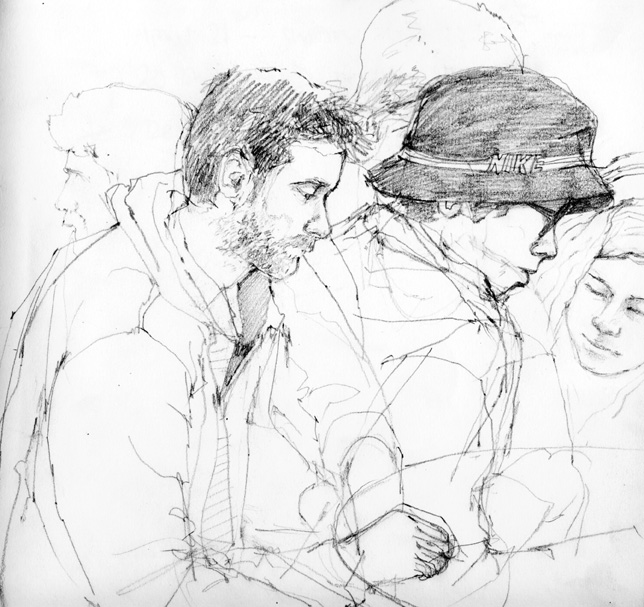
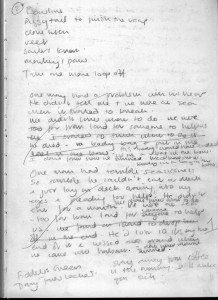
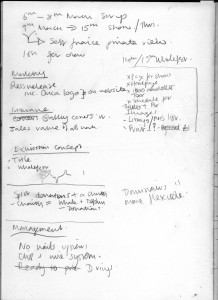
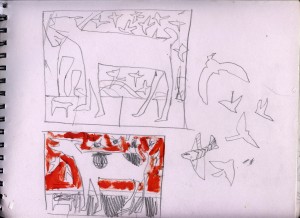
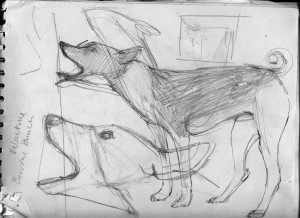
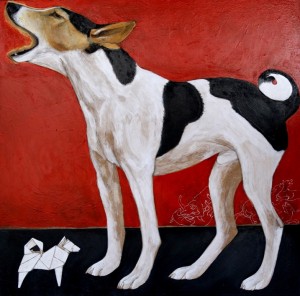
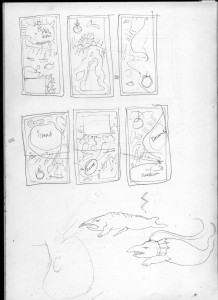
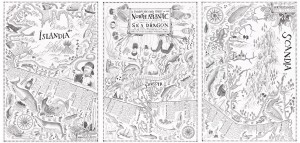
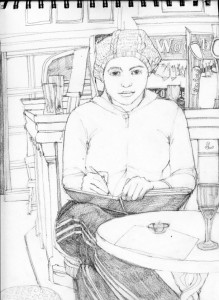
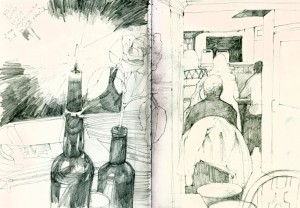
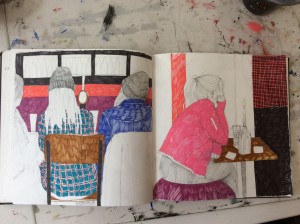
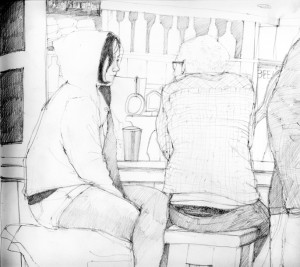
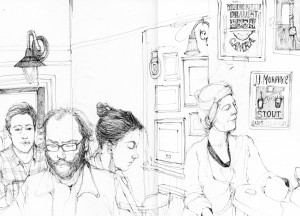
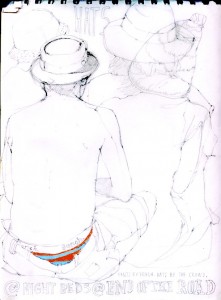
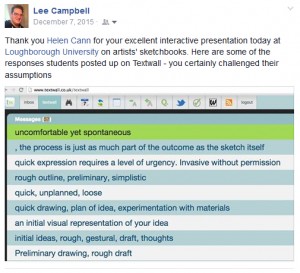
I love your illustrations. The article on sketchbooks is very interesting. I use a sketchbook and carry it everywhere I go. Often the sketches don’t develop into anything else. They act as a memory of a time place or feeling. Not many have seen them. I’m very self conscious. How do you cope with people looking over your shoulder? Are you very confident?
Hi Allison,
Thanks for your comments! I’m not sure about being confident really – but perhaps it helps that I think of my sketchbook as a place to make mistakes in. I don’t expect it to look perfect so it doesn’t matter if someone else sees that it’s not perfect… To begin with though, I really had to work hard to think like that and I still get self conscious sometimes if I see that someone has noticed me drawing them…
Yes I think you have a very good point about the sketchbooks and artists books, I sometimes just tear a page out for notes – Ed at Advocate Art.
Maybe you should actually keep the notes in the sketchbook, Ed, rather than tear them out?! Might be interesting to look back at some time – a small slice of your life…